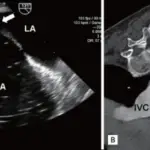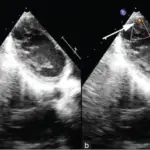Patent ductus arteriosus is the persistent communication between the descending aorta and the pulmonary artery long after birth.
What is the Pathology of Patent Ductus Arteriosus?
Patent ductus arteriosus pathology is characterized by a persistent connection between the aorta and the pulmonary artery leading to a left-to-right shunt.
How does Patent Ductus Arteriosus Present?
Patent ductus arteriosus is one of the common congenital heart defects that is diagnosed in infants or detected in adulthood. It may present as exercise intolerance and pulmonary congestion with murmur. In infants, it typically presents as tachypnea, diaphoresis, feeding difficulties, and weight loss or gain. In adults, it presents as arrhythmia and cyanosis limited to the lower extremities.
How is Patent Ductus Arteriosus Diagnosed?
Patent ductus arteriosus is diagnosed with physical exam, electrocardiogram, chest x-ray, and 2D echo (gold standard).
How is Patent Ductus Arteriosus Treated?
Patent ductus arteriosus usually closes spontaneously, IV indomethacin can aid in closure of the ductus if given 10-14 days after birth. Closure using catheter and surgical ligation may be performed.
What is the Prognosis of Patent Ductus Arteriosus?
Patent ductus arteriosus prognosis is excellent with patients experiencing no symptoms after closure.



